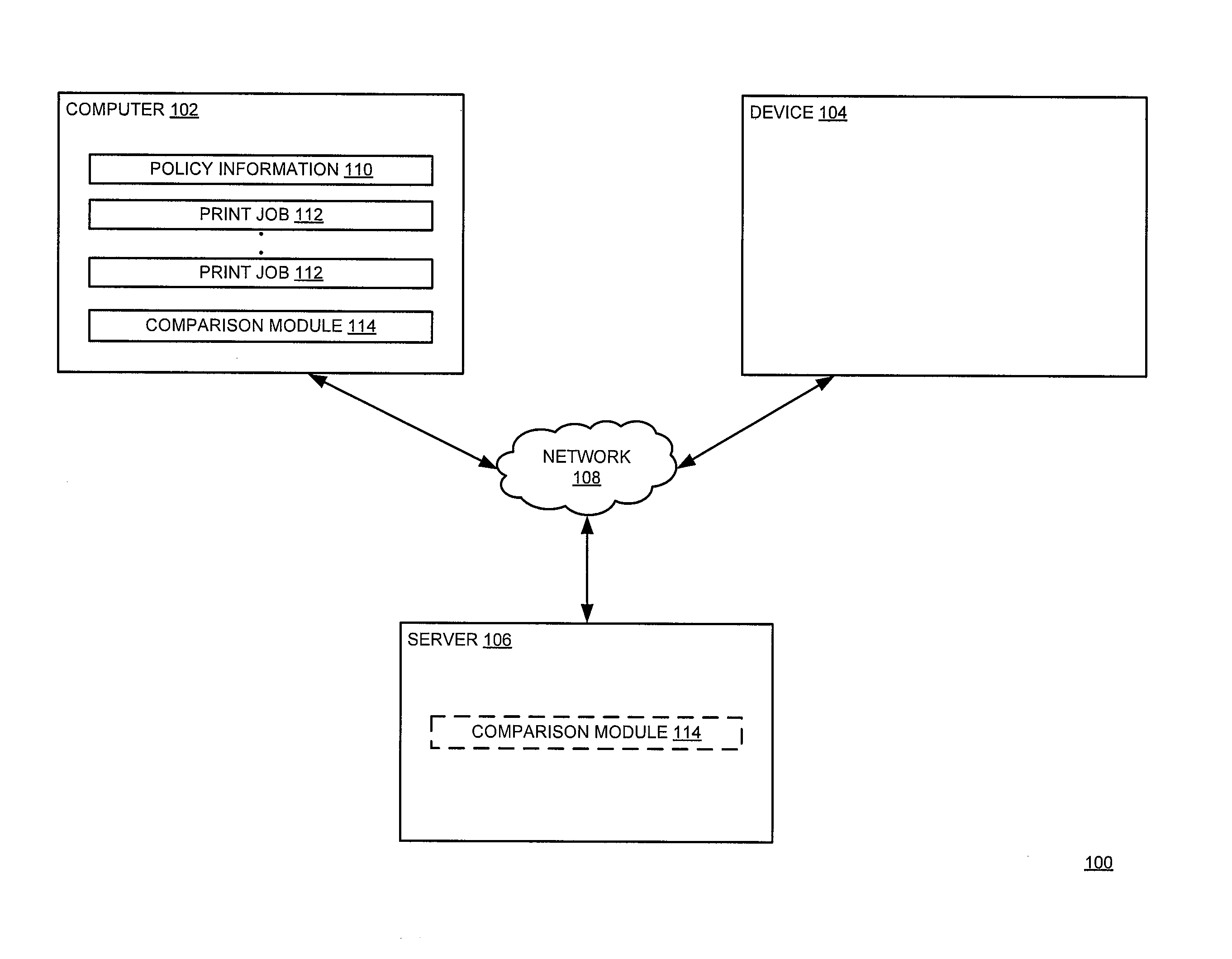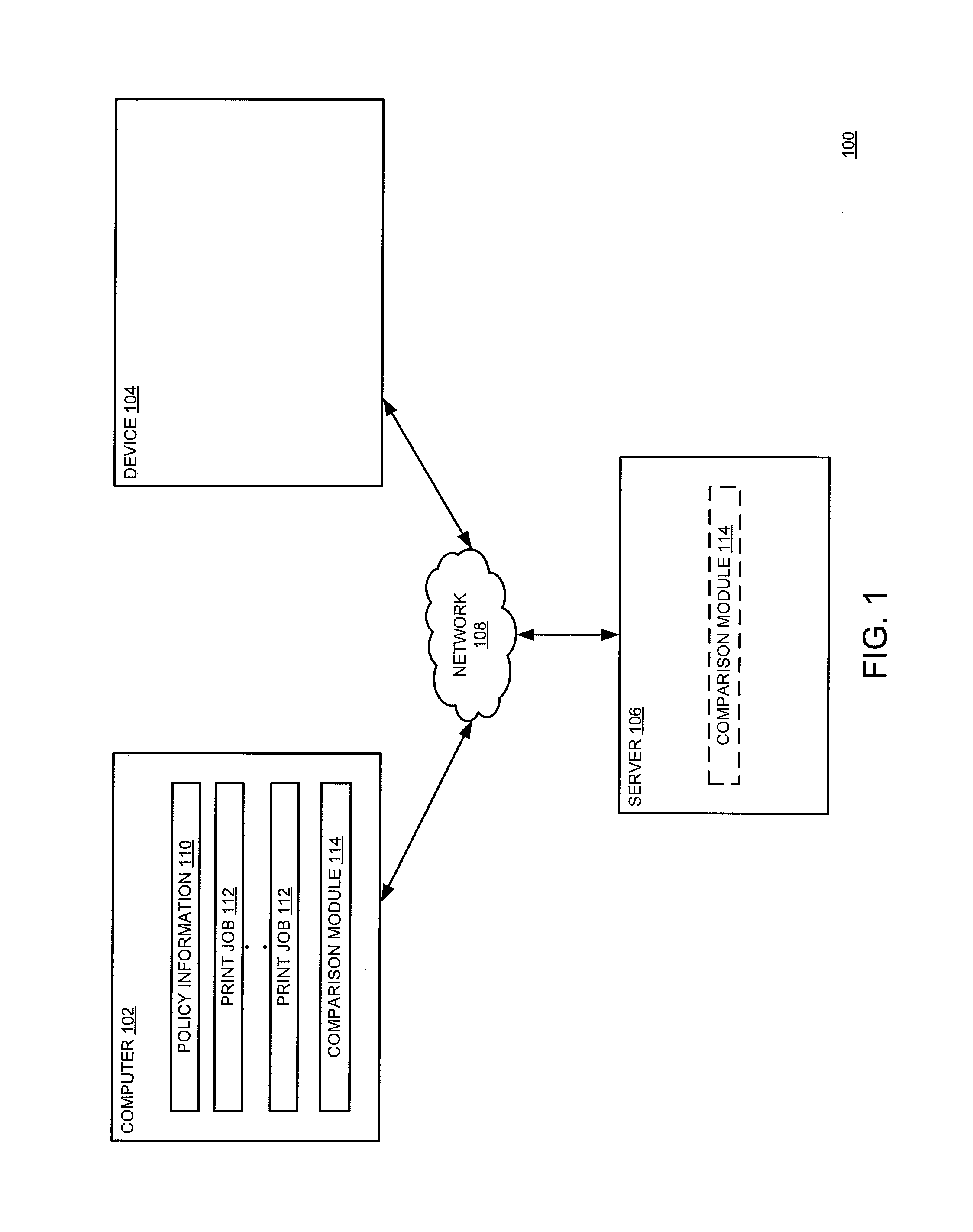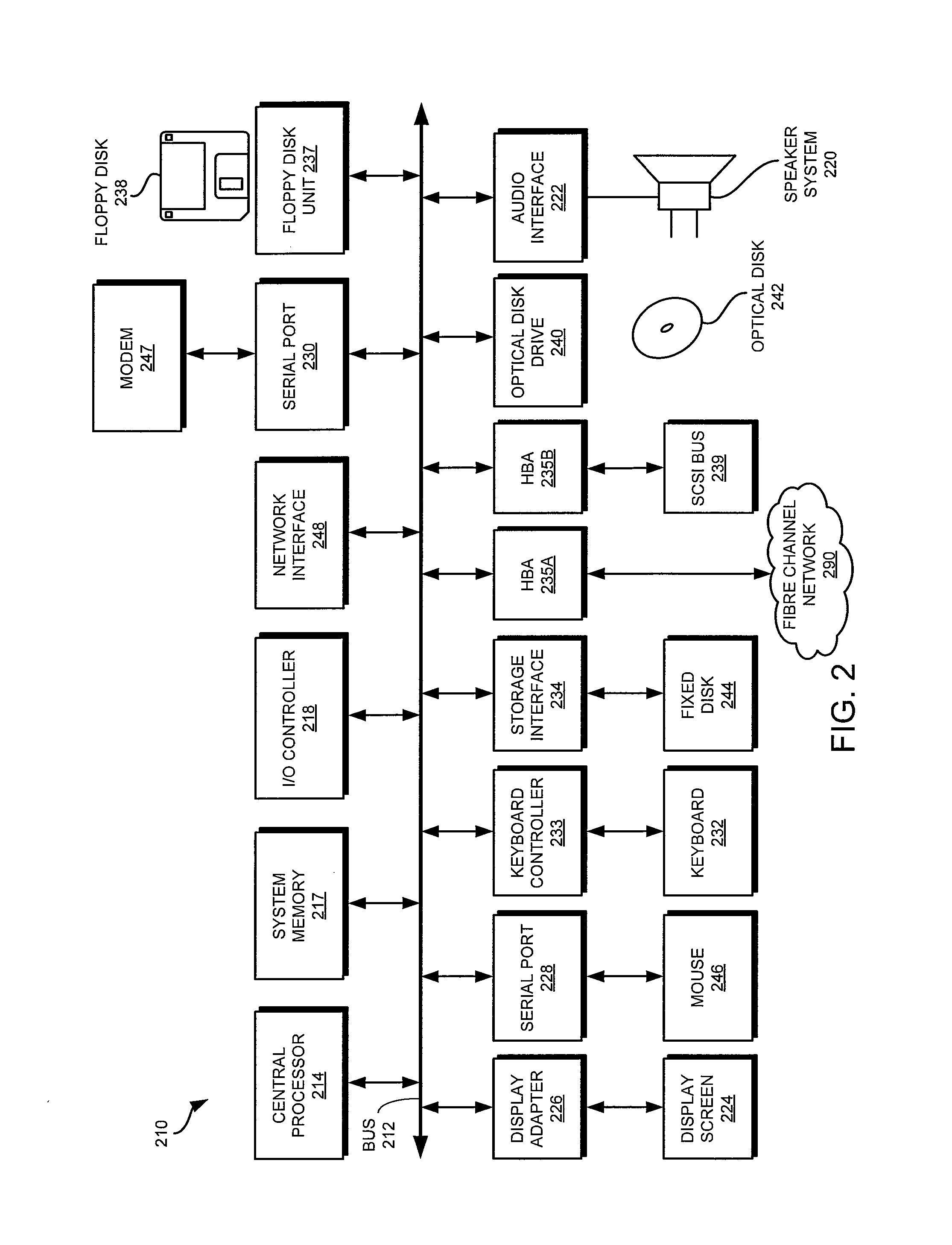Method and apparatus for verifying print jobs to prevent confidential data loss
- Summary
- Abstract
- Description
- Claims
- Application Information
AI Technical Summary
Benefits of technology
Problems solved by technology
Method used
Image
Examples
Embodiment Construction
[0022]As explained in detail further below, various embodiments of the present disclosure enable print job verification to prevent confidential data loss. In some embodiments, a comparison module may be configured with various data loss prevention policies. The comparison module applies such information to a plurality of print jobs in order to identify confidential data within one or more documents. As an example, the comparison module blocks the printing of any document having highly sensitive information before such a document reaches a peripheral device, such as a printer. As another example, the comparison module instructs the peripheral device to print a particular document after comparing an alphanumerical sequence with a user entered alphanumerical sequence. If a print module (e.g., a print module 414 of FIG. 4) identifies a match, the print module prints the particular document.
[0023]FIG. 1 is a block diagram of a system 100 for verifying print jobs to prevent confidential d...
PUM
 Login to View More
Login to View More Abstract
Description
Claims
Application Information
 Login to View More
Login to View More - R&D
- Intellectual Property
- Life Sciences
- Materials
- Tech Scout
- Unparalleled Data Quality
- Higher Quality Content
- 60% Fewer Hallucinations
Browse by: Latest US Patents, China's latest patents, Technical Efficacy Thesaurus, Application Domain, Technology Topic, Popular Technical Reports.
© 2025 PatSnap. All rights reserved.Legal|Privacy policy|Modern Slavery Act Transparency Statement|Sitemap|About US| Contact US: help@patsnap.com



